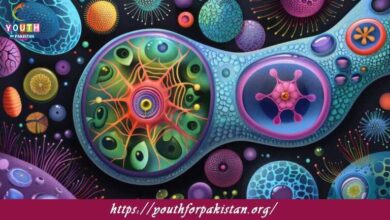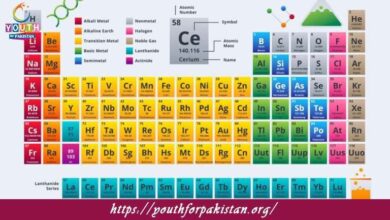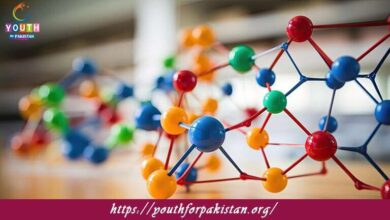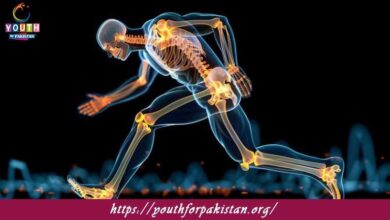12th Class Biology Chapter 16 MCQs with Answers
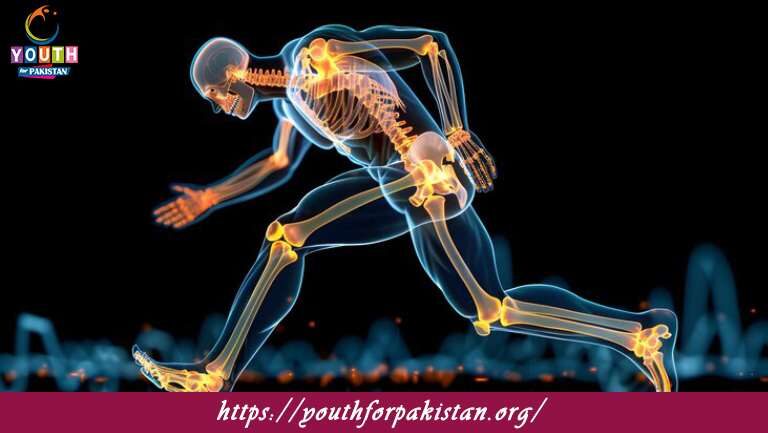
Dive into Support and Movement with our expertly designed 12th Class Biology Chapter 16 MCQs. Covering skeletal systems, muscles, and body mechanics, these questions are crafted to enhance your exam readiness. Trending topics like biology skeletal quiz, movement MCQs, and muscle structure review ensure top search visibility and comprehensive learning. Strengthen your command over essential concepts and practice with precision!
Which tissue type provides support and structure to the body?
a) Epithelial tissue
b) Connective tissue
c) Nervous tissue
d) Muscle tissue
The skeletal system is primarily composed of:
a) Bones and cartilage
b) Muscles and tendons
c) Nerves and blood vessels
d) Organs and glands
The functional unit of the skeletal system is the:
a) Joint
b) Muscle fiber
c) Nephron
d) Bone
Which of the following is responsible for transmitting signals from the brain to the muscles, allowing movement?
a) Nerves
b) Bones
c) Ligaments
d) Cartilage
The type of joint that allows free movement in multiple directions is called a:
a) Hinge joint
b) Ball-and-socket joint
c) Pivot joint
d) Fixed joint
The tough, elastic connective tissue that covers the ends of bones and reduces friction in joints is called:
a) Tendon
b) Ligament
c) Cartilage
d) Adipose tissue
Which of the following is a voluntary muscle responsible for movement?
a) Smooth muscle
b) Cardiac muscle
c) Skeletal muscle
d) Involuntary muscle
What is the main function of the muscular system?
a) Protection of internal organs
b) Producing heat to maintain body temperature
c) Providing support to the body
d) Facilitating nutrient absorption
The process by which bones increase in diameter and thickness is called:
a) Ossification
b) Calcification
c) Growth spurt
d) Appositional growth
The structure that connects muscles to bones is called a:
a) Ligament
b) Tendon
c) Cartilage
d) Synovium
Which of the following is a type of fibrous connective tissue that attaches bones to other bones?
a) Ligament
b) Tendon
c) Cartilage
d) Adipose tissue
The bones of the skull, vertebral column, and ribcage form the:
a) Appendicular skeleton
b) Axial skeleton
c) Visceral skeleton
d) Peripheral skeleton
Which type of muscle is found in the walls of hollow organs like the stomach and blood vessels?
a) Skeletal muscle
b) Cardiac muscle
c) Smooth muscle
d) Involuntary muscle
The biceps and triceps muscles work together to allow movement at which joint?
a) Elbow joint
b) Hip joint
c) Knee joint
d) Shoulder joint
Which of the following is an example of an immovable joint?
a) Hip joint
b) Elbow joint
c) Skull sutures
d) Shoulder joint
The vertebral column is composed of five regions. How many vertebrae are in the cervical region?
a) 7
b) 12
c) 5
d) 24
What is the purpose of synovial fluid in a joint?
a) To provide nutrients to bones
b) To reduce friction and lubricate the joint
c) To transmit nerve signals for movement
d) To produce heat during movement
The bones in the fingers and toes are classified as:
a) Long bones
b) Short bones
c) Flat bones
d) Irregular bones
Which of the following is NOT a function of the skeletal system?
a) Production of blood cells
b) Protection of vital organs
c) Regulation of body temperature
d) Storage of minerals and fats
Which muscle type is responsible for pumping blood throughout the body?
a) Skeletal muscle
b) Smooth muscle
c) Cardiac muscle
d) Involuntary muscle
The growth plate in long bones is responsible for:
a) Increasing bone density
b) Regulating calcium levels
c) Bone repair after fractures
d) Lengthening bones during growth
The joint between the skull and the first cervical vertebra (atlas) is called the:
a) Humeroulnar joint
b) Atlanto-axial joint
c) Glenohumeral joint
d) Temporomandibular joint
The bones of the wrist and ankle are classified as:
a) Long bones
b) Short bones
c) Flat bones
d) Irregular bones
The tough, fibrous membrane that covers the surface of bones except at the joints is called the:
a) Epiphysis
b) Periosteum
c) Medullary cavity
d) Articular cartilage
Which type of muscle is found exclusively in the heart?
a) Skeletal muscle
b) Smooth muscle
c) Cardiac muscle
d) Involuntary muscle
Which of the following is NOT a function of the muscular system?
a) Generating heat for thermoregulation
b) Supporting and protecting internal organs
c) Facilitating movement and locomotion
d) Producing hormones for growth
The point of contact between two bones is known as a:
a) Ligament
b) Tendon
c) Joint
d) Cartilage
The muscle responsible for breathing and expanding the chest cavity during inhalation is called the:
a) Diaphragm
b) Quadriceps
c) Biceps
d) Gastrocnemius
The muscles responsible for bending the elbow are called the:
a) Biceps
b) Triceps
c) Hamstrings
d) Quadriceps
The region where two or more bones are joined together is called a:
a) Ligament
b) Tendon
c) Joint
d) Cartilage
Which of the following is a freely movable joint that allows a wide range of motion?
a) Synarthrosis
b) Amphiarthrosis
c) Diarthrosis
d) Suture
Which type of muscle is under voluntary control and responsible for body movements?
a) Smooth muscle
b) Cardiac muscle
c) Skeletal muscle
d) Involuntary muscle
The bones of the pelvis and shoulder girdle are classified as:
a) Long bones
b) Short bones
c) Flat bones
d) Irregular bones
The joint that allows for rotational movement, as seen in the neck when shaking the head, is called a:
a) Hinge joint
b) Ball-and-socket joint
c) Pivot joint
d) Fixed joint
Which of the following is a characteristic of smooth muscle?
a) It is under voluntary control.
b) It is found in the heart.
c) It is striated in appearance.
d) It lines the walls of organs like the digestive tract.
The bones of the arms and legs are classified as:
a) Long bones
b) Short bones
c) Flat bones
d) Irregular bones
The tough, fibrous membrane that lines the medullary cavity of long bones is called the:
a) Epiphysis
b) Periosteum
c) Medulla oblongata
d) Endosteum
The bone cells responsible for bone formation are called:
a) Osteoblasts
b) Osteoclasts
c) Chondrocytes
d) Osteocytes
The tough, fibrous protein that forms the basic framework of bone is called:
a) Collagen
b) Elastin
c) Keratin
d) Myosin
Which of the following is NOT a type of joint in the human body?
a) Hinge joint
b) Saddle joint
c) Pivot joint
d) Fixed joint
Which of the following is a characteristic of cardiac muscle?
a) It is under voluntary control.
b) It is found in the walls of hollow organs.
c) It is striated in appearance.
d) It forms tendons for movement.
The bones of the skull and ribcage are classified as:
a) Long bones
b) Short bones
c) Flat bones
d) Irregular bones
The point of contact between two bones is cushioned and stabilized by:
a) Ligaments
b) Tendons
c) Synovial fluid
d) Articular cartilage
Which of the following is a characteristic of skeletal muscle?
a) It is under involuntary control.
b) It is found in the walls of hollow organs.
c) It is striated in appearance.
d) It forms the heart muscles.
The bones of the spinal column are classified as:
a) Long bones
b) Short bones
c) Flat bones
d) Irregular bones
The structure that connects bones to muscles is called a:
a) Ligament
b) Tendon
c) Cartilage
d) Synovium
Which of the following is an example of an immovable joint?
a) Hip joint
b) Elbow joint
c) Skull sutures
d) Shoulder joint
The joint that allows for rotational movement, as seen in the neck when shaking the head, is called a:
a) Hinge joint
b) Ball-and-socket joint
c) Pivot joint
d) Fixed joint
Which type of muscle is under voluntary control and responsible for body movements?
a) Smooth muscle
b) Cardiac muscle
c) Skeletal muscle
d) Involuntary muscle
The bones responsible for protecting the brain are found in which region of the skeleton?
a) Axial skeleton
b) Appendicular skeleton
c) Visceral skeleton
d) Peripheral skeleton
The process by which bones increase in diameter and thickness is called:
a) Ossification
b) Calcification
c) Growth spurt
d) Appositional growth
The bones of the wrist and ankle are classified as:
a) Long bones
b) Short bones
c) Flat bones
d) Irregular bones
The muscles responsible for bending the elbow are called the:
a) Biceps
b) Triceps
c) Hamstrings
d) Quadriceps
The bones of the pelvis and shoulder girdle are classified as:
a) Long bones
b) Short bones
c) Flat bones
d) Irregular bones
The bones of the arms and legs are classified as:
a) Long bones
b) Short bones
c) Flat bones
d) Irregular bones
The bones of the skull and ribcage are classified as:
a) Long bones
b) Short bones
c) Flat bones
d) Irregular bones
The bones of the spinal column are classified as:
a) Long bones
b) Short bones
c) Flat bones
d) Irregular bones
The joint that allows for rotational movement, as seen in the neck when shaking the head, is called a:
a) Hinge joint
b) Ball-and-socket joint
c) Pivot joint
d) Fixed joint
Which of the following is an example of an immovable joint?
a) Hip joint
b) Elbow joint
c) Skull sutures
d) Shoulder joint
The joint between the skull and the first cervical vertebra (atlas) is called the:
a) Humeroulnar joint
b) Atlanto-axial joint
c) Glenohumeral joint
d) Temporomandibular joint
If you are interested to enhance your knowledge regarding Physics, Chemistry, Biology, and Computer please click on the link of each category, you will be redirected to dedicated website for each category.


